Can I Use A Cracked Crock Pot? | All You Need to Know
Using a cracked crock pot can be a safety hazard and is generally not recommended as it can be unsafe and may cause food to leak into the electrical components. Some might be tempted to use a repaired appliance to save money or because of the lack of awareness of possible risks. So it is […]
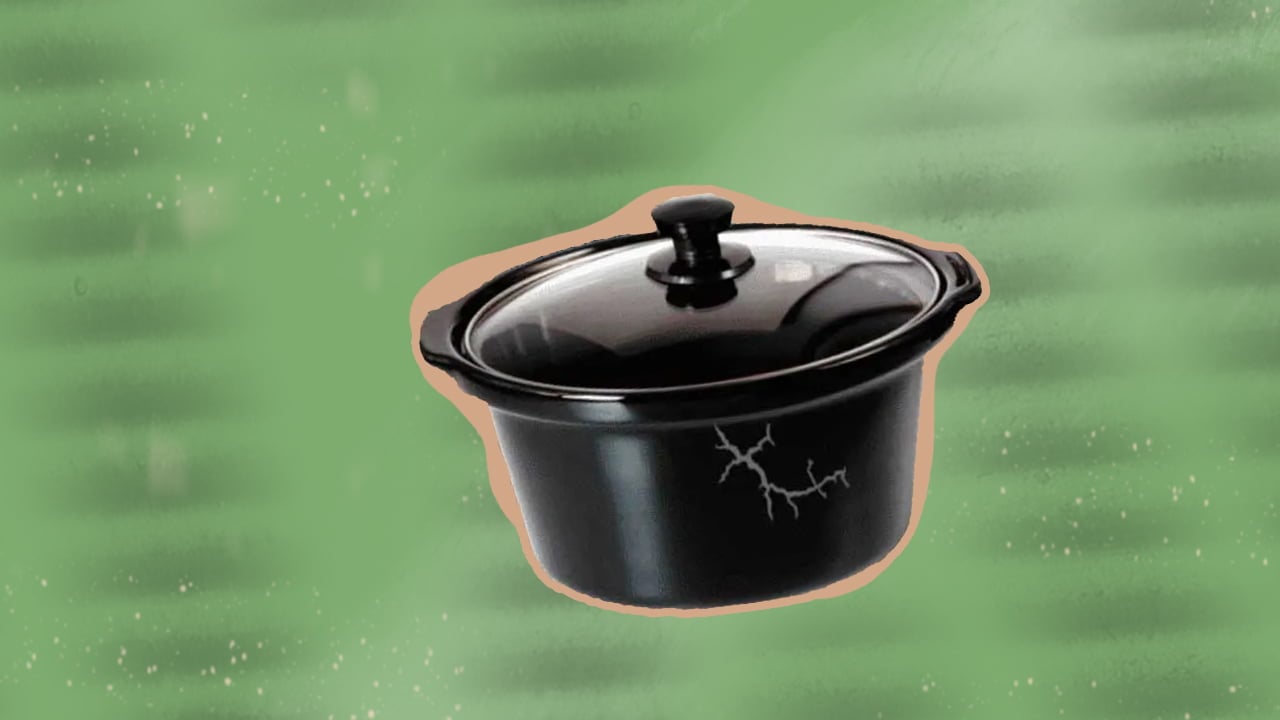
Using a cracked crock pot can be a safety hazard and is generally not recommended as it can be unsafe and may cause food to leak into the electrical components.
Some might be tempted to use a repaired appliance to save money or because of the lack of awareness of possible risks.
So it is important to understand the risks involved and decide whether to continue using a cracked slow cooker or replace it with a new one.
Read through this article and find tips on how to keep your crock pot safe and functional.
Why Can/Can I Not Use a Cracked Crock Pot?

A cracked slow cooker or crock pot is not recommended because it may cause a safety hazard, lead to further damage, void warranty (if it is still covered), and look unattractive.
1. Safety Hazard
A cracked pot can pose a safety hazard because it can cause the content to leak or spill, leading to burns, electric shock, or other injuries.
It may also not heat food evenly, resulting in undercooked or overcooked food.
2. Potential Further Damage
Using a cracked crock pot can cause the crack to worsen, which could make the appliance unusable or unfixable in the future.
If the crack becomes too large, the crock pot may not be able to contain the contents.
3. Warranty Void
If your crock pot is still under warranty, using it with a crack can void it — making it difficult to get replacement parts or repair if it stops working properly.
4. Not Aesthetically Pleasing
While this may not be a safety issue, a broken crock pot can be unsightly and detract from your dining area’s appearance.
Here are some cases where you can continue using your crock pot.
- The crack is very small and does not affect the integrity of the crock pot
- The water doesn’t leak out
- You have assessed that it is safe to use
Otherwise, checking for the best small crock pot is another option.
What Does the Crack Look Like?
Some cracks may be barely visible, while others may be more noticeable. The appearance of the crack varies depending on the size and location of the crack.
- If the crack is SMALL, it may look like a hairline fracture that is difficult to see. In some cases, it may appear as a small, shallow groove or indentation on the surface of the crock pot.
- If the crack is more noticeable and BIGGER, it could look like a jagged line or a network of interconnected lines.
The crock pot may have a crack on the bottom or sides, and additional damage indicators like chipping or flaking may also be present.
Regardless of how the crack appears, it is crucial to take it seriously and determine whether it is worthwhile to continue using the pot.
Note
If you also start noticing a blinking red light, here’s what to do if the crockpot is blinking red light.
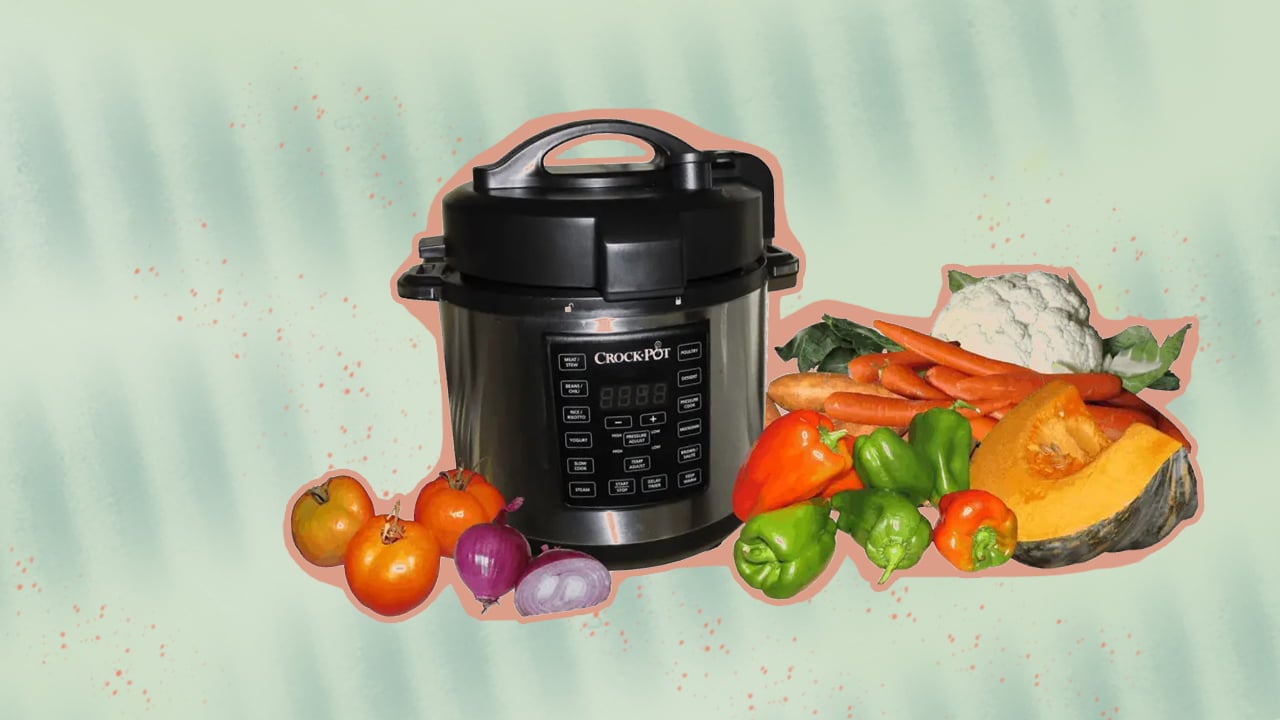
Reasons Why Crock Pots Crack During the Cooking Process
Crock pots or slow cookers crack while cooking due to a sudden temperature change, placing a cold crock pot on a hot surface, or using the crock pot on a stovetop or in an oven.
Let’s look at these three main causes of slow cooker failure.
1. Cooking Frozen Food Out of the Freezer
Adding cold or frozen ingredients to a hot crock pot causes drastic temperature change — where high temperatures drop suddenly.
This affects the cooking time and quality of the food and may result in tiny hairline cracks in your slow cooker dish that often go unnoticed.
Thaw the crock pot before adding frozen meat or poultry, ensure the lid is covered, adjust the cooking time, or use a food thermometer to ensure the slow cooker can withstand high temperatures.
2. Refrigerating Your Crock Before Cooking With It
This practice also causes drastic temperature changes in your slow cooker, causing the chilled ceramic insert to heat up and crack.
Putting your ingredients in the fridge overnight might seem like a great idea to save time and prepare breakfast faster in the morning.
Still, it is not recommended to refrigerate slow cookers before using them.
Doing so can pose food safety risks, interfere with the cooking process, and foster the growth of dangerous bacteria.
For safety tips, move the food to a different container and put it in the fridge or refrigerator until you’re ready to cook food in a slow cooker.
Start with a clean, dry crock pot at room temperature before adding ingredients and starting the cooking process.
3. Placing Your Crock Directly on the Burner
Slow cookers are designed to be used with a heating element built into the pot’s base; therefore, placing the pot directly on a stovetop burner can also cause cracks, breaks, or, worse, create a fire hazard.
Most slow cookers are typically made of ceramic, stoneware, or other materials not designed to withstand direct heat from a stovetop burner.
The kitchen stove’s heating element can create hot spots on the pot, which can ignite any spills or food particles on the pot, or the top of the crock won’t receive enough heat, and the bottom will receive too much.
Reasons Why Crock Pots Crack After the Cooking Process
Crock pots or slow cookers crack even after cooking food for several reasons, such as submerging the hot crock in cold water or putting it down too hard.
1. Placing a Hot Crock in Cold Water
Let the hot slow cooker cool down naturally before exposing it to cold water or any other extreme and sudden temperature changes.
This sudden and drastic change in temperature can also cause the material to expand or contract too quickly, leading to fractures or other damage.
Reviewing the manufacturer’s guidelines for properly handling and caring for your slow cooker is also a good idea to prevent any possible damage.
2. Placing the Crock Down Too Hard on Solid Surfaces
Placing a crock down too hard on a hard surface can cause it to crack or break, especially if it is made of a brittle material such as ceramic or glass.
The impact from a sudden force can create a stress point that weakens the material and causes slow cookers to fracture.
Be gentle when setting it down, and be sure the surface can handle its weight.
Can You Fix a Cracked Crockpot or Slow Cooker?
In some cases, it may be possible to fix cracked slow cookers, but it depends on the severity and location of the crack.
You can purchase replacement pots and a cracked crockpot insert or ceramic insert that will fit into the slow cooker’s crock to keep using the base, provided that the machine, lid, and shell are not harmed or shattered.
If the crock is beyond repair, replacing the slow cooker with a new one is recommended to ensure the safe and reliable cooking of delicious recipes.
How to Fix a Cracked Ceramic Crock Pot?
Cracks in a ceramic crock pot can affect its functionality and pose safety risks during use.
In this section, we will explore the steps you can take to fix a cracked slow cooker, as well as the different considerations to ensure the safety and effectiveness of your repair.
1. Adhesive Glue
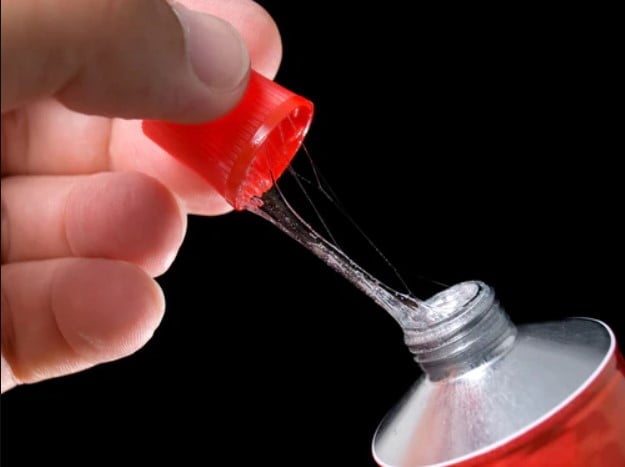
If you have a cracked slow cooker crock (dishware), it may be possible to repair it using adhesive glue designed for ceramic use.
Cyanoacrylate, a chemical that hardens when exposed to air, makes up super glue epoxy.
Here are the steps to follow to fix cracked slow cookers using adhesive glue:
- Ensure the crack’s surface is clean and clear of dust or debris before using any adhesive.
- Spread the ceramic adhesive glue evenly over the hairline crack. Avoid using too much glue, which may make the crack more noticeable.
- Allow the glue to dry completely.
- Test the repair by filling the slow cooker with enough liquid (use a measuring cup) and turning it on.
- Monitor the cracked pot closely during constant use to ensure the repair is holding up and the slow cooker is functioning properly.
2. Hot Milk
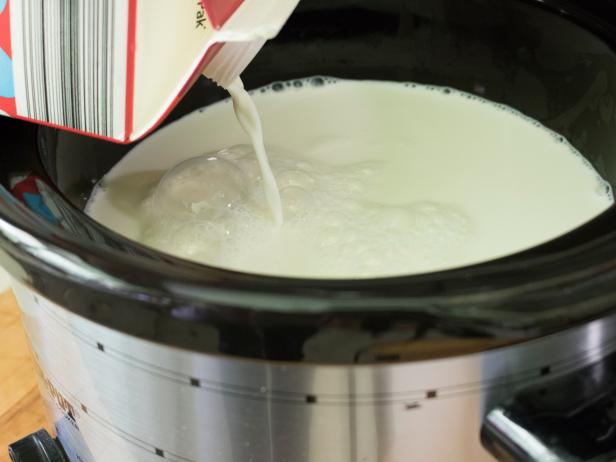
You may have heard you can patch a surface crack by making the milk boil in a crock pot or bowl for about 20 minutes.
We believe this ancient method of using hot milk is a temporary fix.
While hot milk may temporarily fill slow cookers’ cracks, it will not provide a long-lasting repair.
The heat from the hot milk may cause the crack to expand or even shatter the roasting pan or canning pot, making the damage worse.
Over time, the crack will likely reappear, and the hot milk will not hold up to the wear and tear of normal use.
3. Cracked Stoneware Fixing With an Epoxy
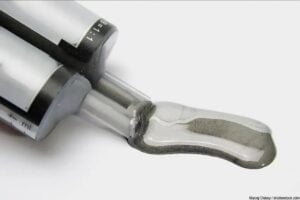
Epoxy in the putty form can be used as a filler to patch holes, cracks, and other imperfections in a ceramic material (cookware and bakeware) and act as an adhesive.
Unlike super glue, epoxy contains two different substances or components that must be mixed to make it effective. These components are called epoxy and a hardener.
When mixed, a chemical reaction allows the epoxy to cure or harden.
Once it has hardened, you can sand it to provide a firm, non-stick coating and smooth surface finish on your slow cooker or instant pot.
These questions aim to address users’ common concerns and solve their problems.
Slow cookers crack — no matter how small — leads to bigger danger.
Using a crock pot with a hairline crack is unsafe, as a small crack in a slow cooker can potentially lead to bigger danger over long periods.
This can weaken the structural durability of the slow cooker and increase the risk of it breaking or shattering, which could be very dangerous once hot food or liquid, like milk, spills out.
Yes. Similar to how all types of rice cookers are used, slow cookers are made to be kept on for extended periods, so leaving one on overnight is entirely safe.
However, you must ensure the slow cooker is positioned on a secure, heat-resistant, flat surface and that no flammable things are nearby.
As the dish may cook unevenly or overflow, ensuring the slow cooker is not overfilled and the lid is secured is also a good idea.
Eating food from a cracked ceramic insert may not be safe.
Bacterial growth can develop from food leftovers that are left behind or that sink into your already cracked insert.
Additionally, some crockpots may contain chemicals unsafe for consumption, such as lead or cadmium.
The risk of lead leaching can also be triggered by the contamination of chemicals or by acidic food that releases more lead when heated.
Yes, any electrical home appliance – even the best broiler pan – can catch fire.
But, if used properly and maintained according to the manufacturer’s instructions and there’s no manufacturing defect, the risk of a slow cooker catching fire is very low.
Additionally, modern slow cookers are designed with safety features such as automatic shut-off and temperature sensors that will prevent the slow cooker from overheating and causing a fire.
However, it is still important to use caution when using a slow cooker to keep food safe. Always check the manufacturer’s instructions or any manufacturing defects before using.
Ensure you keep flammable materials away and that your slow cookers have no broken switches or frayed cords.
Although most are dishwasher-safe, slow cookers are not designed to be used in a stovetop oven or are not oven-safe.
Even the lid is not oven safe as it is made of plastic components.
Slow cookers are designed to be used on a countertop or other flat surfaces. They are intended for slow, low-heat cooking.
The internal components of a slow cooker are not designed as oven-safe to withstand the extreme temperatures in a microwave oven when you cook or boil.
Putting a slow cooker in the oven could make all slow cookers crack, overheat, and cause a fire.
Cracked Crock Pot FAQs
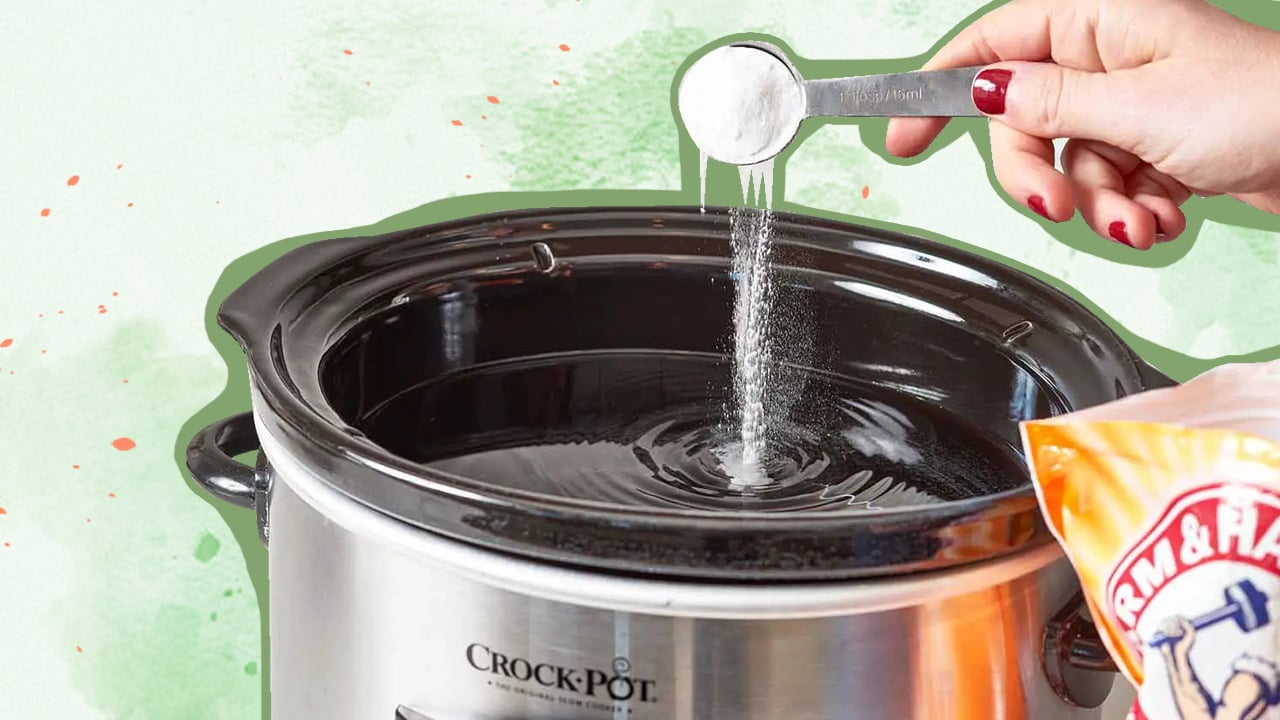
Conclusion
Crockpots have become the cooker for people who want delicious, slow-cooked food but don’t have time to stand by the stove.
While it may be tempting to continue using a slow cooker with a small crack, it’s important to prioritize safety in the kitchen and replace a cracked slow cooker as soon as possible.
Taking precautions, regular maintenance, proper handling, and following the manufacturer’s instructions are essential to ensuring safe and enjoyable slow-cooked meals.
